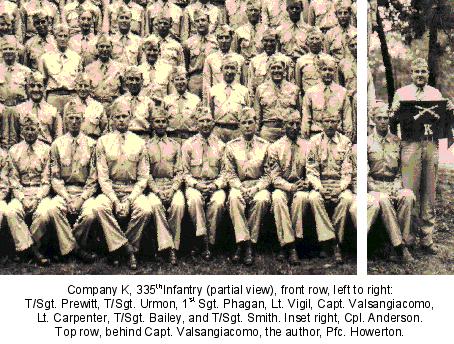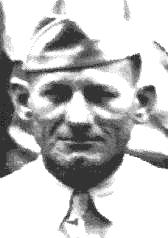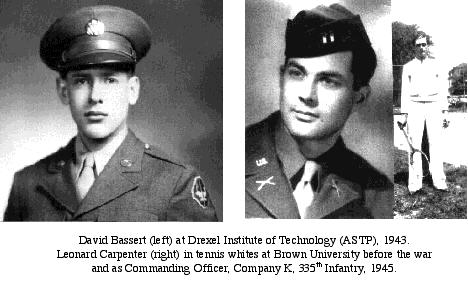"THE MEN"
Allan Wilford Howerton

|
More
than five hundred men served in Company K from the fall of 1942
at Camp Howze, Texas, at Camp Claiborne, Louisiana, during six
months of combat in Europe, and the occupation of Germany until
demobilization in January 1946. We were a diverse group: grizzled regular army sergeants, draftees,
a few volunteers (not plentiful in the infantry), and "mad
as hell" college kids from the discontinued Army Specialized
Training Program (ASTP) chagrined to have wound up as lowly foot
soldiers. |
|
|
Not long before, studying under the banner of what was jokingly called "the flaming pisspot," the ASTP-boys, so labeled by the "old guys," had dreamed of commissions and significant roles in rebuilding Europe after the war. We were also, until the Army ended the program because of the need for more men on the front lines, escaping combat. Suddenly, we were buck privates; learning to crawl in the red mud of Louisiana under machine gun fire and endure twenty-five mile night marches with full field equipment. Soon, however, we commenced to find our place. The old guys began to view us as fellow soldiers, young men with the potential to shoot, fight, and f____ as well as they. Slowly they took us under their wings and made us brothers. One in particular, George O. Prewitt the platoon sergeant of the first platoon, became, before long, our mentor, trusted confidant, and role model. |
|
|
|
Ole
George, as we called him, was a southerner from the hills of North
Carolina with little formal education. However, he was a Phi Beta
Kappa of soldiering. Later, although he was commissioned a second
lieutenant on the battlefield and earned two Silver Star medals,
he was always known only as "Sarge." He has lived forever
in our hearts. The
rest of the leadership was iffy, at best. The company first sergeant
had almost no words in his vocabulary save four-letter obscenities
and used them liberally to break us into the walking infantry.
The company commander at Claiborne was Captain Oreste Valsangiacomo.
Unable to pronounce his name, we called him Captain Val. A New
Englander from Vermont, he was likeable and generally respected.
The executive officer, however, was another story; Leonard Reed
Carpenter, just out of Brown University, had an eagle eye for
dust on footlockers, wrinkles in bunk blankets, and shoes with
the tiniest speck of dust or dullness of polish. We called him
"grandma." He was so loathed by T/Sergeant Bailey, the
platoon sergeant of the second platoon, who hated all educated
officers, that he even cast his eyes away from the executive officer
in the official company photograph. |
|
|
|
In
addition to Captain Carpenter there were a few other unlikely
heroes. The best example is David Bassert; a small, skinny, sheltered
only child from the Philadelphia Main Line, he was the only man
in the company who was never heard to use a curse word more offensive
than "darn." Dave became a medic by chance during the
Battle of the Bulge, earned three Bronze Star medals, saved many
lives, and wrote vivid notes about it after the war. |
| THE MEN | THE BOOK | Company K, 335th |
| Home |
Copyright © 1999-2002 WW-II Heroes. All rights reserved.
Information in this document is subject to change without notice.


